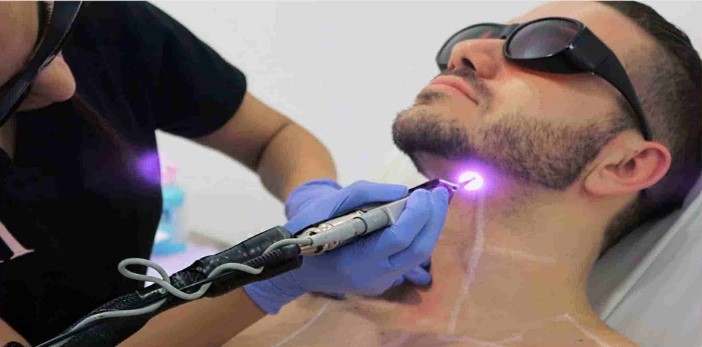Laser hair removal has become one of the most popular methods for laser hair removal today and like any other medical procedure, this method has its side effects. Consequently, laser burn treatment is also a question for many people who use laser hair removal to get rid of their hair.
First, we will discuss why laser burns and carefully examine the types of these burns, then we will refer to the treatment of laser burns.
This article examines the following in order:
Why and how does laser hair removal occur?
In which parts of the body are burns more likely?
How to prevent laser hair burn?
What do post-laser burns look like?
First and second degree burns caused by laser hair removal, recognition and access to it
Laser treatment of first and second degree burns caused by excess hair
Why and how do laser burns occur?
Laser hair removal works by targeting melanin (skin and hair pigments) and it makes sense that this method would work differently for yellow, blonde, white or red hair. In the following, we will discuss the possible causes of laser burn treatment and then we will refer to laser burn treatment.
1. Prolonged contact with the laser
One of the main causes of laser burns is the prolonged contact of the laser with the skin and the lack of a proper cooler. The laser device is very effective in these burns and newer devices with better cooling are much better and more efficient in solving this problem.
Another of these is gels that are applied to the skin to cool the skin, and if these gels dry on the skin, it can aggravate the burn.
Burns after laser
2. Dark skin color
Healthy skin has a defensive reaction against sunlight (generally light). In this way, melanocyte cells produce melanin (skin pigment) during a series of chemical reactions, and with the help of other cells in the dermis, they spread this melanin on the surface of the skin and the skin becomes darker. During laser hair removal, this heat energy is absorbed by the hair follicles because the melanin in the hair is more than the skin, but if the skin is dark (there is a lot of melanin in it) this heat energy may be diverted from the follicle and some of the It accumulates in the skin itself and this accumulation of heat energy causes damage to the skin. This damage can be in the form of burns, blisters, or minor discoloration, which we will treat in the following section.
Burns after laser
3. History of taking drugs that make the skin sensitive to light.
The article Who should not do laser hair removal fully mentions the drugs that make the skin sensitive to light.
4. Laser treatment in situations where the use of laser hair removal is not prohibited.
In this article, who should not do laser hair removal, the prohibitions of laser hair removal are fully discussed.
5. Lack of skill of laser hair technician
Laser hair removal destroys hair follicles by heating, and if the technician can not use the device properly due to lack of skills, there is a possibility of skin damage.
6. Select the wrong device
In some cases, depending on the type and color of the skin, it may be necessary to use a special device with special energy for the laser, and if the device is not used properly for the skin type, the risk of these injuries increases.
7. Failure to observe post-laser hair care
This article discusses who should not do laser hair removal
How to prevent laser hair damage such as burns?
The best way to prevent burns and treat burns after laser hair removal is to avoid the cases and causes mentioned earlier, the most important of which are
Dark skin color
Lack of post-laser care
Select the wrong device
Laser in contraindications and history of light skin sensitizers
In which parts of the body are burns more likely?
According to researchers, this type of burn is more common in areas with thinner or darker skin. These areas mostly include the face, neck, armpits and bikini. The most important way to treat burns after laser hair removal is to prevent and prevent these burns, and to regulate the energy of these devices and to refer to centers that are trained and experienced operators to help with this issue.
Burns after laser
What does a skin burn look like after a laser?
This burn is usually a first-degree burn and varies from a slight redness of the skin to swollen skin blisters. Burn symptoms usually appear in the first few hours and get worse in the first few days. In these cases, you must see your doctor in the beauty center to use your doctor's advice, and in cases where it is not possible to refer a doctor by giving information such as the extent of the burn and the depth of the involved layers to your doctor. Apply laser hair removal.
Remember to suspect a burn if you have any of the following symptoms.
getting layered
Hyperpigmentation
Layering
Change in skin color to whitening

